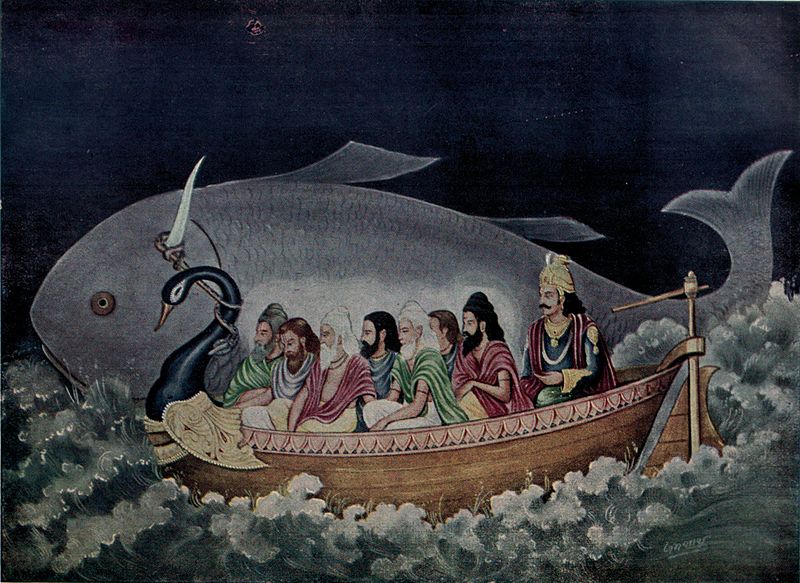Once upon a time there lived a holy man called Manu. He spent his days in prayer and service to mankind. One day as he washed his hands in the river or as some say, filled water in his kamandalu (a water pot that is used largely in the Indian subcontinent) a fish jumped into his hand.
Save me said the fish that spoke like a human. The fish gave Manu some very specific instructions. He should be taken home and set free inside a small pot of water, but then the pot would become too small for him and he would need to be taken to a larger water body. Until finally Manu would have to take the fish to the ocean.
Manu realized that this was no ordinary fish and did as told. And when he took the fish to the ocean, the fish told him that there would come a day when a great flood would come upon the world and Manu should start building a barge for that time. He alone should get on the barge and wait for further command. So saying the fish disappeared.
Sure enough there descended a flood.
The world was swept away.
Manu survived in his barge as it was knocked about in the rising tide.
And then the fish arrived, and with a long rope (or Vasuki the serpent) it tied the barge to its horn—it had a horn, for this fish was a creature from primordial times when beasts and men looked nothing like they do today. The barge was held steady till the flood receded. The water came down and the sun came up and only then was it safely anchored to the Himavat. Manu stepped out, bowed down to the fish and the world emerged from him.
(The earliest account of what was afterwards regarded as an incarnation of Vishnu is found in the “Satapatha Brahmana. The fish is just described as a wonderful fish, not an incarnation of any god. The Puranas (Bhagwat and Matsya bring in Hari and Vishnu and the concept of Dashavatara) and in the Mahabharata, the fish reveals himself to the world as Brahma.
And how does the world come into being from Manu? Through a woman he creates out of sacrifice, called Ida—she is daughter, wife and one half of the first couple of civilisation that is common to all stories of creation.
Story collected by: Arundhuti Dasgupta
Source: Hindu Mythology, Wilkins, W. J.
Image details: Wikipedia
